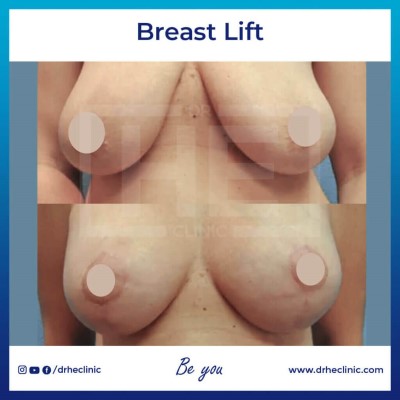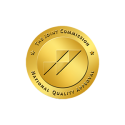Breast Lift in Turkey
Breast lift surgery in Turkey is a popular procedure aimed at lifting and reshaping sagging breasts for a more youthful appearance. Turkey is known for offering high-quality breast lift surgeries at competitive prices, performed by experienced surgeons in state-of-the-art medical facilities. Comprehensive care packages typically include pre-operative consultations, the surgery itself, and post-operative follow-up.

Breast Lift in Turkey: A Comprehensive Overview
A breast lift in Turkey, also known as mastopexy, is a cosmetic procedure designed to raise and firm the breasts by removing excess skin and tightening the surrounding tissue. Renowned for its high-quality healthcare and affordable prices, Turkey has become a leading destination for breast lift surgery.
The process begins with a thorough consultation and medical evaluation to determine the patient’s suitability and desired outcomes. During the surgery, skilled plastic surgeons use advanced techniques to reshape and support the new breast contour. This procedure is performed in state-of-the-art facilities to ensure the best results and patient safety.
Breast Lift Surgery Steps
1. Consultation and Planning
- Choosing a Surgeon: Select a board-certified plastic surgeon experienced in breast lifts.
- Initial Consultation: Discuss your goals, medical history, and any concerns. The surgeon will evaluate your breasts’ size, shape, and skin quality, and may take photographs for your medical record.
- Surgical Plan: The surgeon will recommend a specific breast lift technique based on your breast size and shape, the size and position of your areolas, the degree of breast sagging, and skin quality.
2. Preoperative Preparations
- Medical Evaluations: Complete any required lab testing or medical evaluations.
- Pre-surgery Instructions: These may include guidelines on eating, drinking, and adjusting or avoiding certain medications and supplements that can increase bleeding risk.
- Recovery Preparation: Arrange for someone to drive you home and help you during your initial recovery period.
3. Anesthesia
- Administration of Anesthesia: Breast lift surgery is typically performed under general anesthesia, ensuring you are asleep and comfortable throughout the procedure.
4. The Surgical Procedure
- Incision Patterns: The specific pattern depends on your individual case but can include:
- Around the areola (periareolar)
- Around the areola and vertically down to the breast crease (lollipop)
- Around the areola, vertically down to the breast crease, and horizontally along the breast crease (anchor)
- Lifting and Reshaping: Excess skin is removed, and breast tissue is lifted and reshaped to improve breast contour and firmness. The nipple and areola may be repositioned to a more youthful height.
- Closing the Incisions: Sutures, skin adhesives, or surgical tape close the skin. The sutures are usually layered within the breast tissue to create and support the newly shaped breasts.
5. Recovery
- Immediate Postoperative Care: You’ll be taken to a recovery area to be closely monitored as you wake from anesthesia.
- Home Recovery: You’ll receive instructions on how to care for your breasts, medications to aid healing and reduce the risk of infection, and when to follow up with your surgeon.
- Support Garments: You may need to wear a special support bra or elastic bandage to minimize swelling and support the breasts as they heal.
6. Postoperative Care and Observation
- Activity Restrictions: Avoid strenuous activities for at least a few weeks after surgery as recommended by your surgeon.
- Pain Management: Pain, swelling, and bruising are common, and you’ll likely be prescribed medication to manage discomfort.
- Monitoring: It’s important to attend all follow-up appointments and to monitor your breasts for any signs of complication.
7. Long-term Care and Outcome
- Scar Management: Scars are permanent but will gradually fade and improve over time. Your surgeon may recommend scar treatment options.
- Maintaining Results: Maintaining a stable weight and a healthy lifestyle can help preserve the results of your breast lift.
Plan Your Trip to Turkey for Breast Lift Surgery
| Timeline | Activity | Recommendations |
|---|---|---|
| 6-12 Months Before | Initial Consultation | Consult with your local doctor and a Turkish clinic remotely to discuss eligibility and potential dates. |
| 3-6 Months Before | Medical Preparation | Begin necessary dietary and medical preparations as advised by the surgical team. |
| 1 Month Before | Travel Arrangements | Book flights and accommodation. Arrange for medical visas if necessary. |
| 2 Weeks Before | Final Checks | Finalize all personal and medical preparations. Confirm travel itinerary and local transport in Turkey. |
| Arrival in Turkey | Pre-Op Consultation | Meet with your surgical team in Turkey for a final pre-operative consultation. Undergo any last-minute tests. |
| Day of Surgery | Surgery | Proceed with the breast lift surgery as scheduled. |
| 1-2 Weeks Post-Surgery | Recovery in Turkey | Stay in Turkey for initial recovery and follow-up appointments. Follow all post-operative care guidelines. |
| Return Home | Post-Surgery Follow-up | Continue recovery at home with regular follow-ups remotely or with local healthcare providers. |

Need Help? Contact Us!
7/24 Obesity Help Desk
Breast Aesthetics
Breast Lift Surgery Cost in Turkey
The average cost of breast lift surgery in Turkey ranges from $2,000 to $4,000. This includes the surgeon’s fee, anesthesia, hospital fees, and accommodation. The specific cost of the procedure will vary depending on the extent of excess skin, the desired outcome, the surgeon’s experience, and the complexity of the procedure.
| Region | Average Breast Lift Surgery Cost |
 Turkey Turkey | $2,000 – $4,000 or more |
 USA USA | $8,000 – $12,000 or more |
 Canada Canada | $8,000 – $12,000 or more |
 UK UK | £5,000 – £8,000 or more |
 Australia Australia | AUD 8,000 – AUD 15,000 or more |
 Germany Germany | €8,000 – €10,000 or more |
 France France | €7,000 – €10,000 or more |
Why does Breast Lift Surgery Cost in Turkey Cheap?
- Exchange rate: Favorable exchange rates for foreign currencies relative to the Turkish lira can make procedures even cheaper for international patients.
- Standardized procedures: Many Turkish clinics employ standardized protocols and techniques for common procedures like Breast Augmentation Surgery, achieving efficiency and cost savings.
How to Reach Turkey?
By Air: Turkey is well-connected with direct flights from major cities around the world. There are international airports in Istanbul, Ankara, Antalya, and Izmir, among others. You can check for flights from your nearest major airport to one of these Turkish cities.
By Sea: Turkey has several ports that receive passenger ferries from neighboring countries and islands. You can travel to Turkey by ferry from Greece, Russia, Ukraine, and other nearby locations. Major ports include Istanbul, Izmir, and Antalya.
By Train: While not as common as air or sea travel, you can also reach Turkey by train from select European cities. The most common routes are from Sofia, Bulgaria, and Bucharest, Romania, to Istanbul. However, train travel to Turkey may require multiple transfers and take longer compared to air or sea travel.
| Departure City | Arrival City | Duration | Estimated Price |
|---|---|---|---|
| 🛫 London (LHR) | 🛬 Istanbul (IST) | ⏰ 3 hours 50 minutes | 💰 $300 |
| 🛫 Manchester (MAN) | 🛬 Istanbul (IST) | ⏰ 4 hours 35 minutes | 💰 $350 |
| 🛫 Paris (CDG) | 🛬 Istanbul (IST) | ⏰ 3 hours 25 minutes | 💰 $280 |
| 🛫 Frankfurt (FRA) | 🛬 Istanbul (IST) | ⏰ 2 hours 55 minutes | 💰 $320 |
| 🛫 Moscow (VKO) | 🛬 Istanbul (IST) | ⏰ 4 hours 25 minutes | 💰 $400 |

Breast Lift Surgery Before and After Photos
Submit your request for access to before and after photos to see actual patient results from our many cosmetic procedures and treatments at Dr. HE Clinic.
Breast Lift Surgery Turkey Reviews


Posted on
Truspilot
Posted on
TruspilotIs it Safe To Have A Breast Lift Surgery in Turkey?
Yes, it is generally safe to have breast lift surgery in Turkey. The country is known for its high standards in medical care, experienced surgeons, and advanced facilities. However, it’s crucial to thoroughly research and choose a reputable clinic and a certified surgeon to ensure safety and optimal results.
Frequently Asked Questions About Breast Lift Surgery
Is Breast Lift Surgery Painful?
Breast lift surgery involves some pain and discomfort, which can be managed with prescribed pain medication. Most patients find that the pain decreases significantly within a few days to weeks.
Why Should I Get a Breast Lift in Turkey?
Getting a breast lift in Turkey offers high-quality care from experienced surgeons at affordable prices. Turkey’s advanced medical facilities, comprehensive care packages, and the opportunity to recover in a beautiful, culturally rich environment make it an attractive destination for the procedure.
Is it Safe to Get a Breast Lift in Turkey?
Yes, it is generally safe to get a breast lift in Turkey, provided you choose a reputable clinic and an experienced, certified surgeon. Turkey is known for high medical standards and advanced facilities.
QUALITY CERTIFICATES
















Posted on
Truspilot